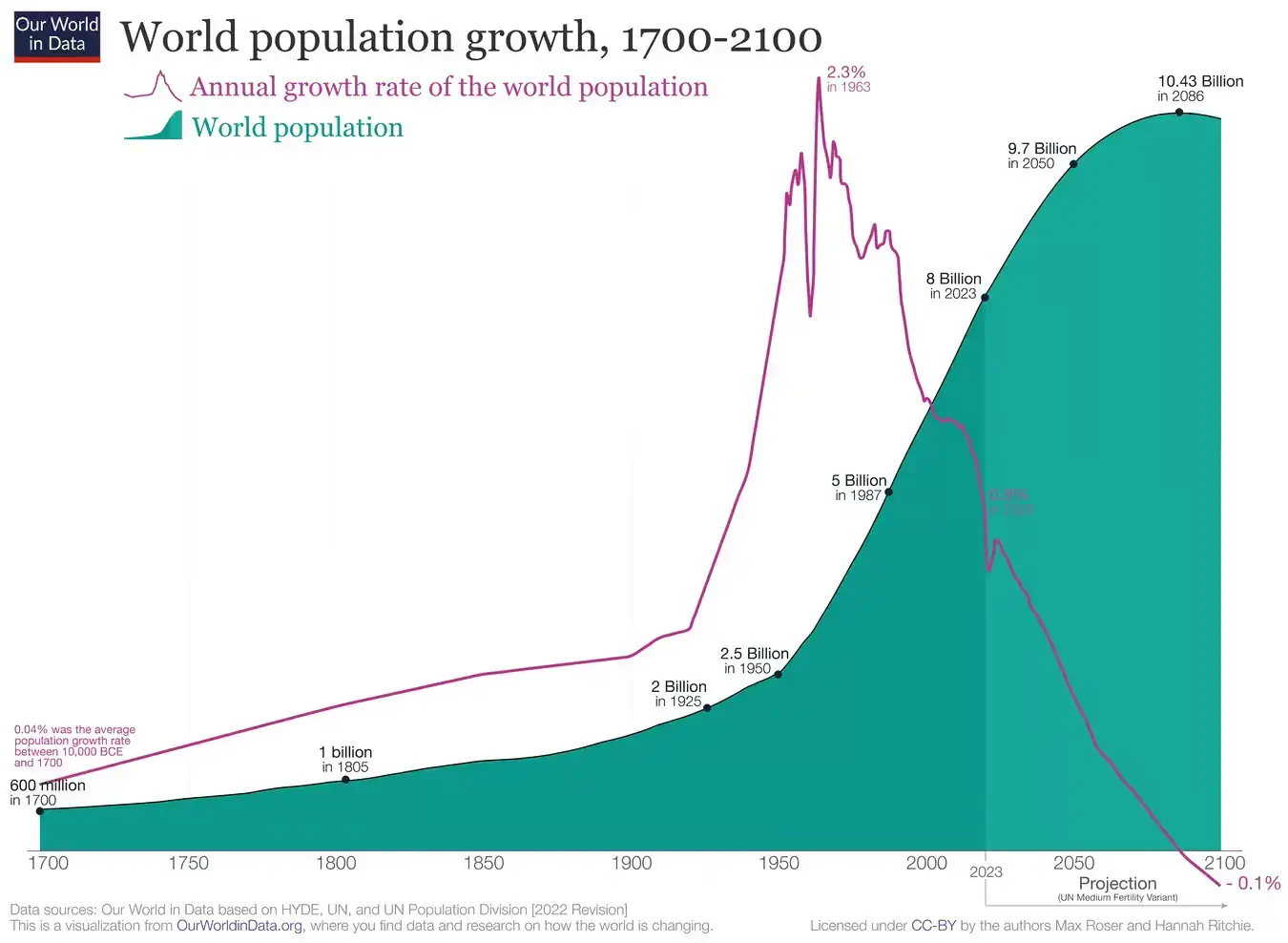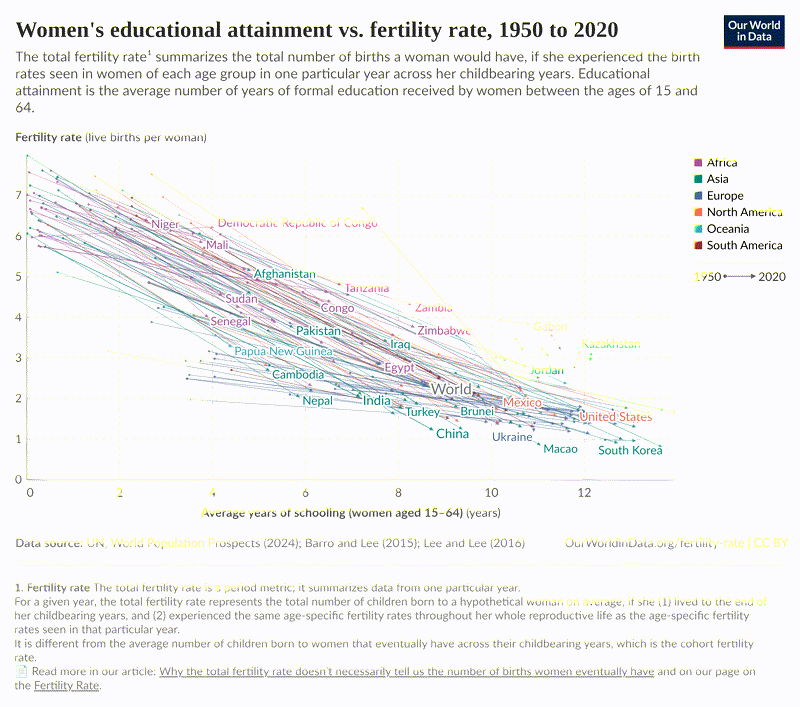We’ve all seen images about the decline in the global fertility rate. Some have apocalyptic pronouncements about this, trend and predict the end of humanity, but I’ve never been convinced about the doom case. Surely this isn’t the first time this has happened in human history, and yet here we are.
.png)


The reason why I am sharing these charts is because there were a couple of interesting articles in The Economist pouring cold water on the doomsday scenarios that vindicate my skepticism:
Another cause for optimism is that healthy human lifespans keep stretching, allowing people to stay productive for longer. In a 41-country sample, a 70-year-old in 2022 had the same cognitive abilities as a 53-year-old had in 2000. Perhaps such progress will end. But as long as it continues, it will slow the shrinkage of labour forces, giving societies crucial extra decades to adapt. Countries that waste human capital may find ways to waste less of it, by feeding and educating young minds better, and removing barriers to women working. In sum, a declining population need not mean a poorer one. Japan has been shrinking for nearly two decades, yet living standards have risen markedly.
The nationalists are right that the world’s make-up will change. Even the UN’s projection has China’s population collapsing by more than half by 2100. India will hold steady longer. Europe and America may postpone shrinkage via immigration—or they may choose not to. The future will be more African than the present, but there, too, fertility is plunging. Big, gradual geopolitical and cultural shifts are normal. The world has coped with them in the past, and can surely cope again. — Don’t panic about the global fertility crash
Though it’s almost a near certainty that the global fertility rate will continue to fall as other populous regions like India and Africa experience faster declines, projections are sensitive to the underlying assumptions:
Alarming as this might sound, it is also more or less inevitable. Many population forecasts, including the un’s, are inflated by implausible assumptions (see chart). Demographers are naturally reluctant to predict that the current pace of decline in fertility rates will continue far into the future, since that would eventually yield a global population of zero. Yet even if you assume that fertility rates will stabilise or recover at some point, it is difficult to justify the choice of any particular year as the moment when that inflection might occur. In the minds of the un’s demographers, the least arbitrary solution to this problem is to assume that the recovery will begin right away. — Humanity will shrink, far sooner than you think
Join the Conversation
Share your thoughts and go deeper down the rabbit hole